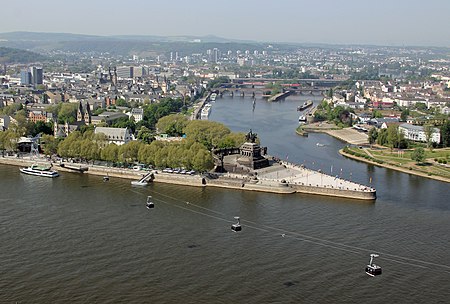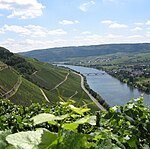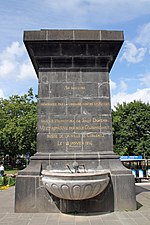Deutsches Eck

Deutsches Eck (German: [ˈdɔʏtʃəs ˈʔɛk], "German Corner") is the name of a promontory in Koblenz, Germany, where the Mosel river joins the Rhine. Named after a local commandry of the Teutonic Order ("Teutonischer Orden"), it became known for a monumental equestrian statue of William I, first German Emperor, erected in 1897 in appreciation of his role in the unification of Germany. One of many Emperor William monuments raised in the Prussian Rhine Province, it was destroyed in World War II and only the plinth was preserved as a memorial. Following German reunification, a replica of the statue was erected on the pedestal after controversial discussions in 1993. It is today a Koblenz monument and a popular tourist attraction.
Excerpt from the Wikipedia article Deutsches Eck (License: CC BY-SA 3.0, Authors, Images).Deutsches Eck
Deutsches Eck, Koblenz Altstadt
Geographical coordinates (GPS) Address Nearby Places Show on map
Geographical coordinates (GPS)
| Latitude | Longitude |
|---|---|
| N 50.3645 ° | E 7.606 ° |
Address
Deutsches Eck
Deutsches Eck
56068 Koblenz, Altstadt
Rhineland-Palatinate, Germany
Open on Google Maps











